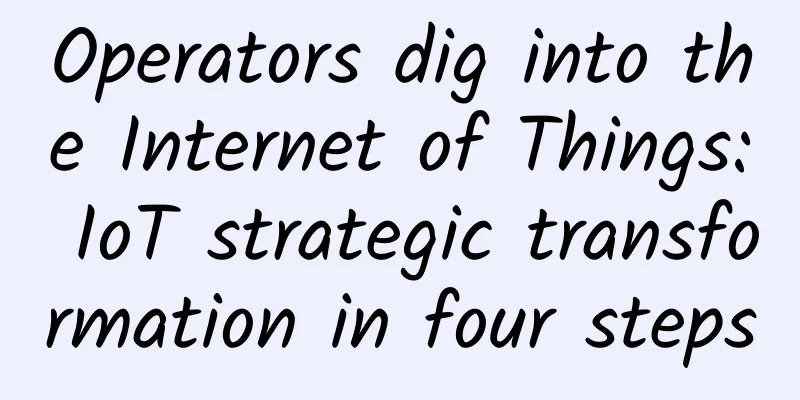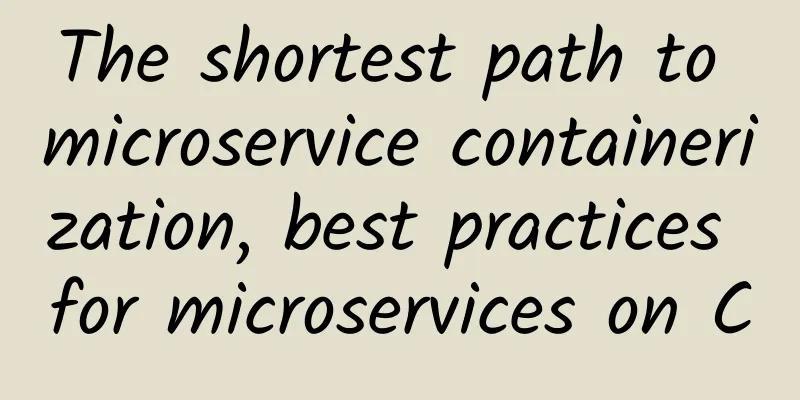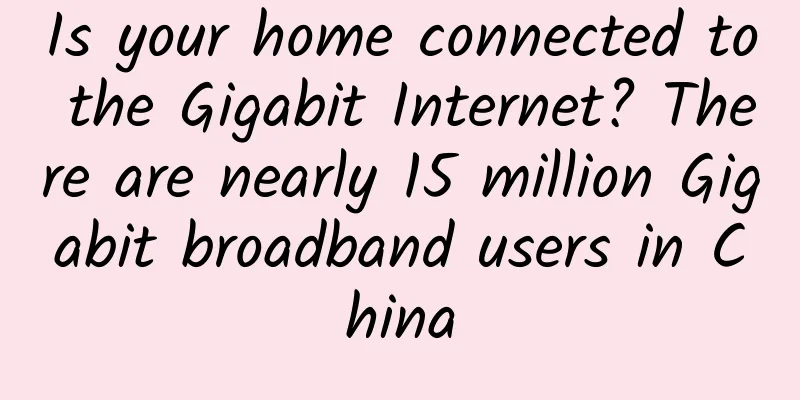Operators dig into the Internet of Things: IoT strategic transformation in four steps

|
Driven by both technology and the market, the IoT opportunity window has opened. Faced with the huge market opportunities and challenges brought by IoT, operators urgently need to expand to the platform and application service layers with greater value in the IoT market through strategic transformation while building their own core competitiveness. How to respond to and guide the transformation process of IoT determines the positioning of operators in the future market structure. IoT transformation not only involves the use of new technologies, but also involves the transformation of management systems, service models, and business models. Therefore, considering the three major factors of "concentration, scale, and value", generally speaking, operators should adopt the following strategies:
***, build a complex and high-quality network. At the network level, the network has transformed from being mainly based on mobile network services for communication between people to a complex and high-quality network that supports multiple communication technologies. Based on LTE, NB-IoT and eMTC, it meets the requirements of IoT communication scenarios for wide coverage, low power consumption, low cost and certain mobility; and through continuous network construction and optimization, it provides flexible network communication support that best suits the requirements of IoT industry customers, and evolves towards 5G, fully covering narrowband massive application scenarios, high-bandwidth application scenarios, key application scenarios and other IoT scenario requirements. Second, provide service-oriented intelligent connections. The connection service requirements of the Internet of Things are completely different from those of traditional human-to-human communications. For operators, the Internet of Things business is more oriented towards industry and enterprise customers. The special requirements for connection services mainly include "on-demand, autonomous and manageable connections" and "global unified connection management services." Connections are managed on demand and autonomously: For industry and enterprise customers, they not only use mobile network connections, but also regard mobile network connections as part of their application scenarios or final products. They need to independently manage the life cycle of mobile network connections and manage the status of connections according to the situations in different links such as production, logistics, and sales, rather than having everything operated through operators. At the same time, there are specific definitions for the life cycle of connections, such as support for test status, etc. This requires operators to be able to provide industry and enterprise customers with an "IoT connection management platform", usually called CMP (connectivity management platform), which provides IoT connection management services to industry and enterprise customers in the form of a self-management portal combined with an open API, and facilitates industry and enterprise customers to integrate IoT connection management with existing IT systems and business processes. According to the practical experience of major operators, in order to meet the flexible management requirements of industry and enterprise customers for IoT connections, most operators generally adopt a completely independent and dedicated IoT connection management platform, including a dedicated IoT core network system, to provide industry and enterprise users with connection management functions, traffic packages, billing rules, dedicated numbers, dedicated APNs, and business processes customized for IoT scenarios that are completely different from traditional person-to-person communication services, and provide them to enterprises in the form of portals and API systems. Global unified connection management service: The IoT connection management platform has gone through three stages of development: The first stage is that due to its own business needs, the enterprise requires the operator to open specific connection management functions while purchasing connections from the operator, and then integrate them with its own IT system and business processes. This method lacks a unified interface, and is difficult to integrate and maintain when facing multiple operators. In addition, due to the differences between different networks, the final effect often cannot meet the requirements of the enterprise. The second stage is that in order to gain an advantage in the IoT connection service market, operators began to use a unified IoT connection management platform to provide a unified management portal and API to their corporate customers, and built a dedicated IoT connection management platform based on the IoT connection management needs of industries and enterprises. With the emergence of fully functional dedicated platforms, the needs of industries and enterprises have been better met, but the construction of a proprietary IoT connection management platform by operators independently takes a long time and requires a large investment, and it cannot meet the needs of industries and corporate customers for unified management of global connections across operators. In the third stage, which is also the current market stage, more and more operators choose to adopt third-party universal connection management platforms, or use third-party universal connection management platforms combined with self-built connection management platforms. At the same time, operators adopt the form of operator alliances to meet the needs of enterprises for global IoT deployment and unified management through extensive cooperation, thereby gaining advantages in market competition. The advantage of using a universal connection management platform in cooperation with a third party is that enterprise customers can use the same platform, the same portal, and the same API to manage the connection services provided by different operators globally and across countries, so that operators who adopt this third-party universal platform in a specific market will gain a competitive advantage in market competition. Since the provision of global IoT connection management services must be cross-operator, it cannot be achieved through a single operator's own IoT connection management platform, and the integration of many-to-many platforms between operators is extremely difficult, so the third-party universal IoT management platform has become the preferred cooperation choice for mainstream operators. In summary, in terms of connection management platform (CMP), operators should choose to use a general cooperation platform or a cooperation platform + self-built platform strategy based on the volume of their own IoT connection business. Under the above trend, more and more operators are beginning to choose to adopt a multi-platform strategy to meet the global unified connection management requirements of industry and enterprise users. |
<<: White label revolution, fighting together to carve out a bloody path
>>: 10 Things You Need to Know About Cisco Global Gold Certification
Recommend
If 4G construction is "building roads", 5G is actually "building cities"...
"Now that I'm using 5G, I don't thin...
Intel to jointly develop 5G technology with Indian telecom operator Reliance Jio
On June 23, according to Mobile World Live, Intel...
Wen Yanfeng of SF Express: A two-pronged approach of people and technology to help the technical team better understand business needs
[51CTO.com original article] On December 1st and ...
Deep sea battle: Cloud computing companies are strongly involved in laying submarine optical cables
I was thinking of writing about this topic by acc...
5G is here, how far is 6G?
"In the 6G era, hundreds of high-definition ...
CMIVPS: $863.5/year-E5-2620*2, 32G memory, 480G SSD, 30M bandwidth, Hong Kong server promotion
CMIVPS yesterday launched a 50% discount on the a...
5G co-construction and sharing: the simple "saving money" mentality is not advisable
On June 6, after China issued 5G commercial licen...
China Mobile Xiongyan Consulting Insights: 5G URLLC Key Technology Research Report
Labs Guide URLLC "Low Latency High Reliabili...
I experienced 5G network on Beijing Line 16 for a while and used up 7GB of data
What is 5G? Do I need to change my SIM card? Can ...
Netty - Sticky Packets and Half Packets (Part 2)
Continue from the previous article "Introduc...
In 2025, the 5G core market size will reach US$9.497 billion
According to ResearchAndMarkets, the global 5G co...
Huawei's F5G optical access partners in China have exceeded 900, and the "1+3+5" prairie fire action has been upgraded
From March 14th to 15th, the "Huawei China P...
Smart home, a bone that will eventually be chewed by NB-IoT?
As for the huge scale of the smart home market, w...
Smart homes need smarter Wi-Fi
Today's homes feature an increasing number of...









